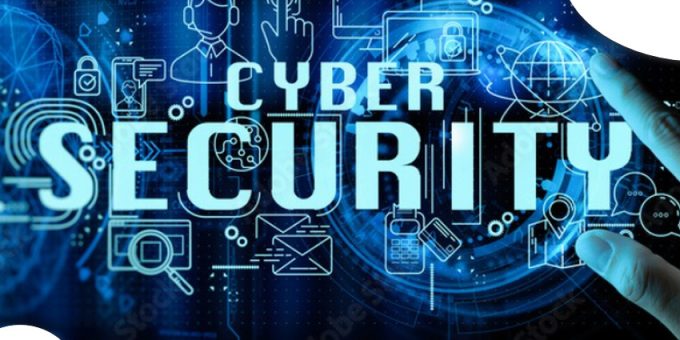
In today’s digital age, cybersecurity is crucial. Both individuals and businesses face increasing cyber threats. Implementing effective cybersecurity measures is essential to protect sensitive information.
Understanding Cybersecurity
Cybersecurity involves protecting systems, networks, and programs from digital attacks. These attacks often aim to access, change, or destroy sensitive information. They may also extort money from users or disrupt normal business operations. Implementing strong cybersecurity measures is essential to safeguard against these threats.
The Importance of Regular Software Updates
Keeping software up-to-date is a fundamental cybersecurity practice. Regular updates fix vulnerabilities that cybercriminals might exploit. By ensuring all software is current, you reduce the risk of cyber attacks. This practice applies to operating systems, applications, and security software.
Implementing Strong Password Policies
Using strong, unique passwords for different accounts is vital. Weak passwords make it easier for attackers to gain unauthorized access. A robust password policy includes using a mix of letters, numbers, and symbols. Regularly updating passwords and avoiding reuse across multiple accounts enhances security.
Utilizing Multi-Factor Authentication
Multi-factor authentication (MFA) adds an extra layer of security. It requires users to provide two or more verification factors to access an account. Even if a password is compromised, MFA can prevent unauthorized access. Implementing MFA wherever possible significantly enhances account security.
Educating Employees on Cybersecurity
Human error often contributes to security breaches. Regular training helps employees recognize and avoid potential threats. This includes identifying phishing emails, avoiding suspicious links, and understanding the importance of data protection. An informed workforce is a strong defense against cyber threats.
Establishing a Firewall
A firewall acts as a barrier between your network and potential threats. It monitors incoming and outgoing traffic and blocks suspicious activity. Implementing firewall security is essential for protecting sensitive data. Both hardware and software firewalls provide valuable protection.
Regular Data Backups
Regularly backing up data ensures that information can be restored in case of a cyber incident. Backups should be stored securely and tested periodically. This practice minimizes downtime and data loss during a cyber attack. Automated backup solutions can streamline this process.
Implementing Access Controls
Limiting access to sensitive information reduces the risk of internal threats. Implement role-based access controls to ensure employees only access data necessary for their roles. Regularly review and update access permissions to maintain security. This practice helps prevent unauthorized data access.
Developing an Incident Response Plan
An incident response plan outlines steps to take during a cyber attack. It helps contain the threat and minimize damage. Regularly updating and practicing this plan ensures readiness. A well-prepared response can significantly reduce the impact of a cyber incident.
Staying Informed About Emerging Threats
Cyber threats constantly evolve. Staying informed about the latest threats enables proactive defense measures. Subscribe to cybersecurity newsletters and participate in relevant training. Engaging with cybersecurity communities can also provide valuable insights.
Implementing Secure Wi-Fi Networks
Securing Wi-Fi networks prevents unauthorized access. Use strong passwords and encryption methods for your networks. Regularly updating router firmware enhances security. Additionally, consider hiding your network’s SSID to make it less visible to potential attackers.
Monitoring Network Activity
Regular network monitoring helps detect unusual activity. Early detection allows for prompt response to potential threats. Utilize network monitoring tools to automate this process. Establishing alerts for suspicious activities can further enhance security.
Implementing Secure Communication Channels
Using secure communication channels protects sensitive information during transmission. Implement encryption for emails and other forms of communication. This ensures that even if data is intercepted, it remains unreadable to unauthorized parties. Secure communication tools are essential for maintaining confidentiality.
Regular Security Audits
Conducting regular security audits identifies vulnerabilities in your systems. Addressing these issues promptly reduces the risk of cyber attacks. Audits should include assessments of both hardware and software components. Engaging third-party experts can provide an unbiased evaluation.
Implementing Endpoint Protection
Endpoint protection secures individual devices that connect to your network. This includes computers, smartphones, and tablets. Implementing antivirus and anti-malware solutions on all devices is essential. Regularly updating these solutions ensures protection against the latest threats.
Ensuring Physical Security Measures
Physical security is often overlooked but is equally important. Ensure that servers and other critical hardware are in secure locations. Implement access controls to prevent unauthorized physical access. Regularly review physical security measures to address potential vulnerabilities.
Implementing Secure Disposal Practices
Properly disposing of old hardware and data storage devices prevents data leaks. Ensure that all data is securely erased before disposal. Utilize professional services for the destruction of sensitive materials. This practice helps prevent data recovery by unauthorized individuals.
Establishing a Culture of Security
Fostering a culture that prioritizes cybersecurity encourages vigilance. Encourage reporting of suspicious activities without fear of reprisal. Regularly communicate the importance of cybersecurity to all members of the organization. A security-conscious culture enhances overall defense against cyber threats.